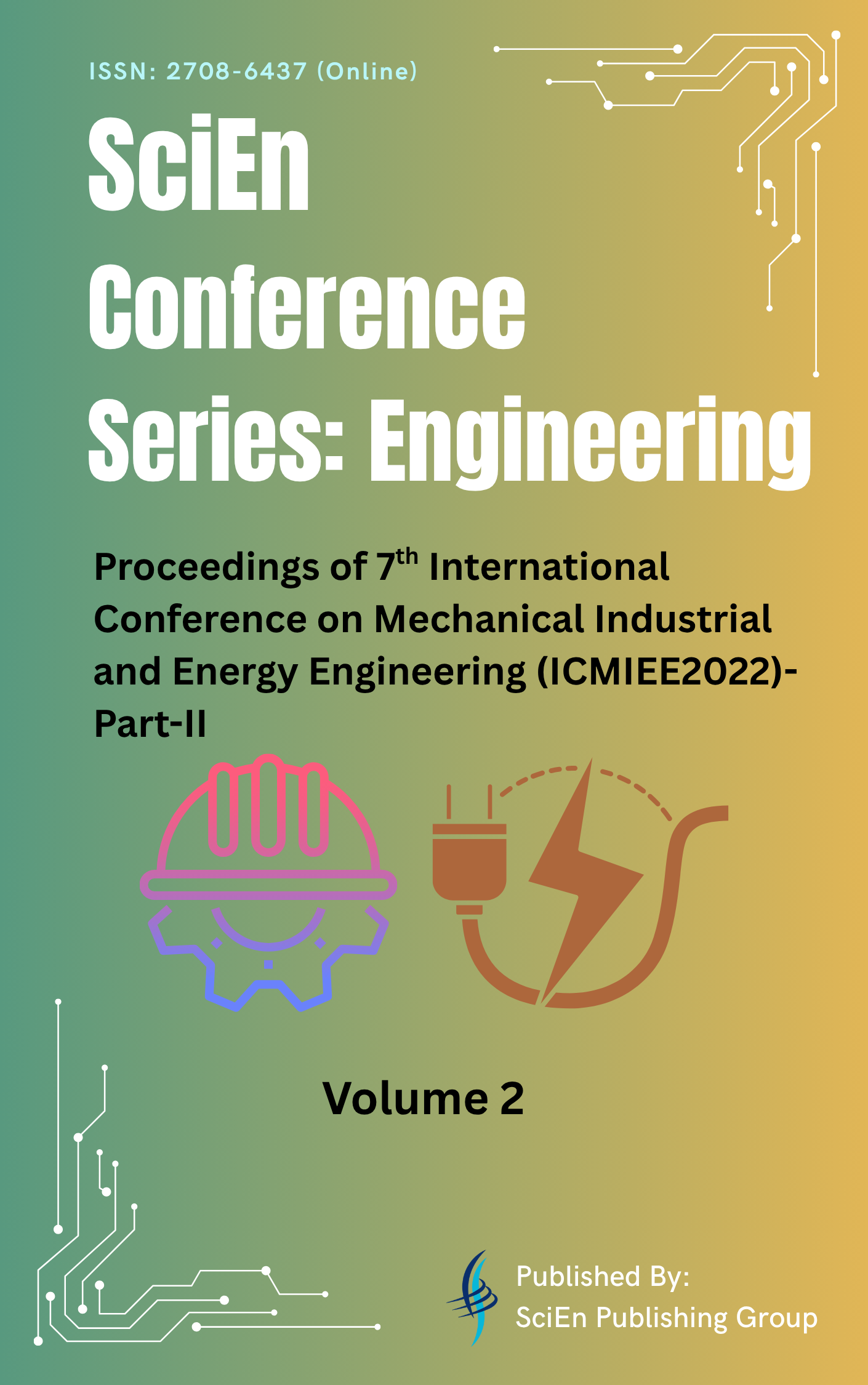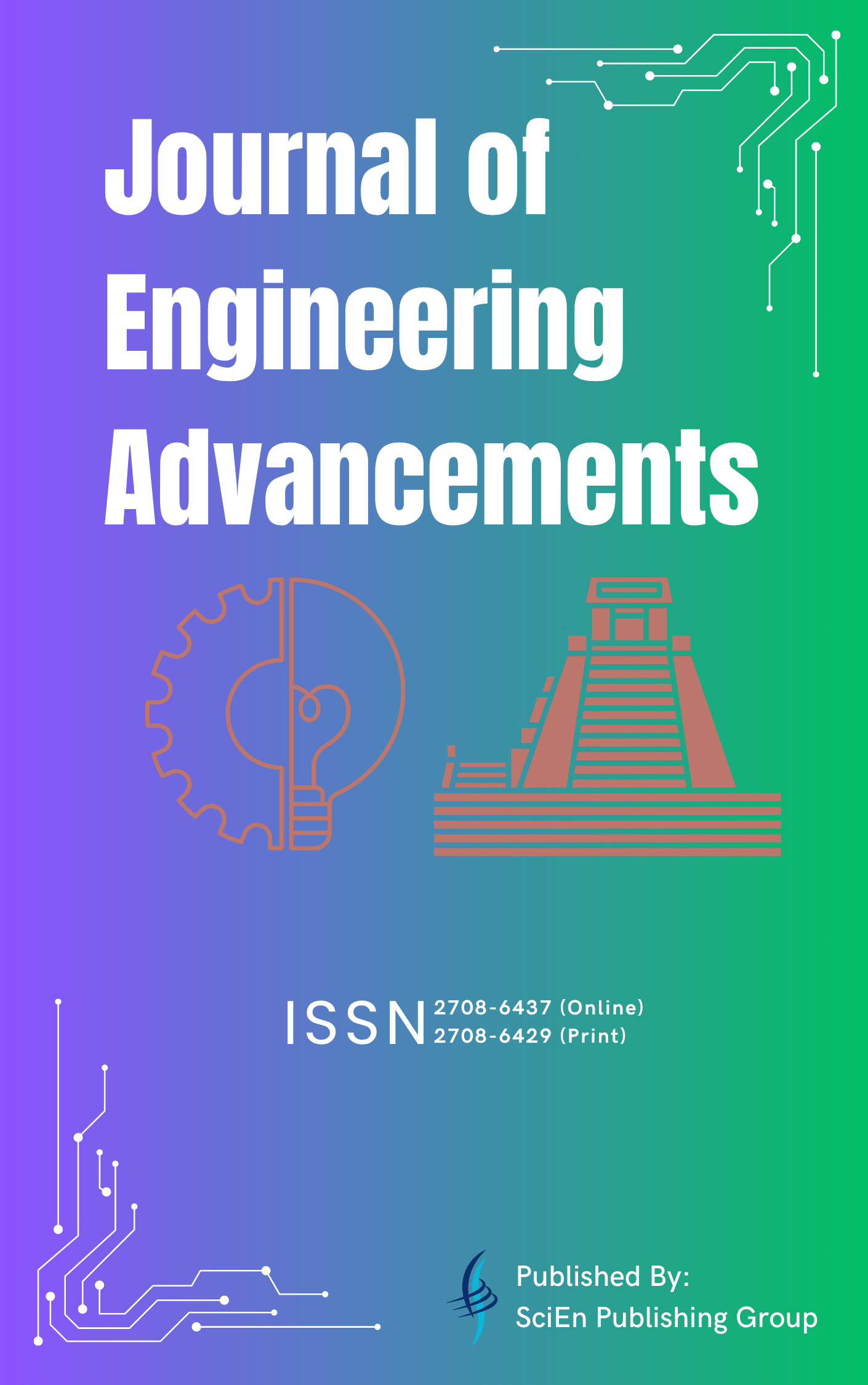An Intelligent Hybrid Manufacturing System for FDM Surface Defects Monitoring with Industry 4.0
DOI:
https://doi.org/10.38032/scse.2025.2.10Keywords:
Surface quality, Grinding operation, Hybrid manufacturing, Convolutional neural network, SustainabilityAbstract
Additive manufacturing (AM) and machining in a single machine colloquially known as Hybrid manufacturing help to produce customized and complex products without assembling including greater design freedom and reduced material wastage. A CNC-based grinding mechanism is introduced in the same system to overcome those defects and enhance the quality. To increase productivity and improve product surface quality, evolving additive manufacturing demand and finishing subtractive processes must be combined on the same platform. For the additive manufacturing method, Fused Deposition Modeling (FDM) has been employed, and a grinding operation can be performed for surface finishing. A camera module is used to capture surface images for defect detection such as stringing, rashing, and surface cracking after the AM process. Convolutional Neural Network (CNN) is applied to the captured image for the defect detection process. If the CNN analysis reveals any surface defects, a grinding operation will be performed on the surface for better surface quality. The architecture has provided a platform to collect data from the image captured by the camera module for evaluating and identifying surface defects using CNN. CNN model provided 89% accuracy for surface defects detection. As a result, the CNC grinding operation can be done on that particular surface of the product for smoothing the partially roughened surfaces. Therefore, this study demonstrates to improve the surface quality, reduce cycle time, set up time reduction & improve the product's sustainability. The proposed approach of a hybrid manufacturing system also provides a basic framework to increase efficiency, reduce downtime, increase efficiency, improve end part consistencies of the product as a consequence of post-processing & defect detection in the same system, and enable I4.0
Downloads
Downloads
Downloads
References
[1] A. Jandyal, I. Chaturvedi, I. Wazir, A. Raina, and M. I. Ul Haq, "3D printing - A review of processes, materials and applications in industry 4.0," Sustain. Oper. Comput., vol. 3, no. May 2021, pp. 33-42, 2022. DOI: https://doi.org/10.1016/j.susoc.2021.09.004
[2] A. Haleem and M. Javaid, "Additive Manufacturing Applications in Industry 4.0: A Review," J. Ind. Integr. Manag., vol. 04, no. 04, p. 1930001, 2019. DOI: https://doi.org/10.1142/S2424862219300011
[3] T. Huang, S. Wang, and K. He, "Quality control for fused deposition modeling based additive manufacturing: Current research and future trends," Proc. 2015 1st Int. Conf. Reliab. Syst. Eng. ICRSE 2015, Dec. 2015. DOI: https://doi.org/10.1109/ICRSE.2015.7366500
[4] D. Strong, M. Kay, B. Conner, T. Wakefield, and G. Manogharan, "Hybrid manufacturing - integrating traditional manufacturers with additive manufacturing (AM) supply chain," Addit. Manuf., vol. 21, pp. 159-173, May 2018. DOI: https://doi.org/10.1016/j.addma.2018.03.010
[5] A. B. Lopes de Sousa Jabbour, C. J. C. Jabbour, M. Godinho Filho, and D. Roubaud, "Industry 4.0 and the circular economy: a proposed research agenda and original roadmap for sustainable operations," Ann. Oper. Res., vol. 270, no. 1-2, pp. 273-286, Nov. 2018. DOI: https://doi.org/10.1007/s10479-018-2772-8
[6] R. B. Kristiawan, F. Imaduddin, D. Ariawan, Ubaidillah, and Z. Arifin, "A review on the fused deposition modeling (FDM) 3D printing: Filament processing, materials, and printing parameters," Open Eng., vol. 11, no. 1, pp. 639-649, 2021. DOI: https://doi.org/10.1515/eng-2021-0063
[7] K. Paraskevoudis, P. Karayannis, and E. P. Koumoulos, "Real-Time 3D Printing Remote Defect Detection (Stringing) with Computer Vision and Artificial Intelligence," Process. 2020, Vol. 8, Page 1464, vol. 8, no. 11, p. 1464, Nov. 2020. DOI: https://doi.org/10.3390/pr8111464
[8] G. Gao, F. Xu, and J. Xu, "Parametric Optimization of FDM Process for Improving Mechanical Strengths Using Taguchi Method and Response Surface Method: A Comparative Investigation," Mach. 2022, Vol. 10, Page 750, vol. 10, no. 9, p. 750, Aug. 2022. DOI: https://doi.org/10.3390/machines10090750
[9] J. Yang, Y. Chen, W. Huang, and Y. Li, "Survey on artificial intelligence for additive manufacturing," 2017. DOI: https://doi.org/10.23919/IConAC.2017.8082053
[10] K. Bartsch, A. Pettke, A. Höbert, J. Lakämper, and F. Lange, "On the digital twin application and the role of artificial intelligence in additive manufacturing: A systematic review," JPhys Mater., vol. 4, no. 3, 2021. DOI: https://doi.org/10.1088/2515-7639/abf3cf
[11] A. Banerjee, H. K. Haridas, A. SenGupta, and N. Jabalia, "Artificial Intelligence in 3D Printing: A Revolution in Health Care," Lect. Notes Bioeng., pp. 57-79, 2022. DOI: https://doi.org/10.1007/978-981-33-6703-6_4
[12] M. S. Shakur, M. A. Islam, and M. A. Rahman, "A Cyber Physical Industry 4.0 Framework of Image Based Defect Detection for Additive Manufacturing," 2021 Int. Conf. Comput. Commun. Chem. Mater. Electron. Eng., pp. 1-6, Dec. 2021. DOI: https://doi.org/10.1109/IC4ME253898.2021.9768488
[13] K. A. Lorenz, J. B. Jones, D. I. Wimpenny, and M. R. Jackson, "A review of hybrid manufacturing," Proc. - 26th Annu. Int. Solid Free. Fabr. Symp. - An Addit. Manuf. Conf. SFF 2015, pp. 96-108, 2020.
[14] W. Grzesik, "Hybrid machining processes. Definitions, generation rules and real industrial importance," Mechanik, vol. 91, no. 5-6, pp. 338-342, 2018. DOI: https://doi.org/10.17814/mechanik.2018.5-6.50
[15] A. A. Krimpenis and G. D. Noeas, "Application of Hybrid Manufacturing processes in microfabrication," J. Manuf. Process., vol. 80, pp. 328-346, Aug. 2022. DOI: https://doi.org/10.1016/j.jmapro.2022.06.009
[16] J. L. Dávila, P. I. Neto, P. Y. Noritomi, R. T. Coelho, and J. V. L. da Silva, "Hybrid manufacturing: a review of the synergy between directed energy deposition and subtractive processes," Int. J. Adv. Manuf. Technol. 2020 11011, vol. 110, no. 11, pp. 3377-3390, Sep. 2020. DOI: https://doi.org/10.1007/s00170-020-06062-7
[17] M. A. Rahman et al., "A Cloud-Based Cyber-Physical System with Industry 4.0: Remote and Digitized Additive Manufacturing," Autom. 2022, Vol. 3, Pages 400-425, vol. 3, no. 3, pp. 400-425, Aug. 2022. DOI: https://doi.org/10.3390/automation3030021
[18] M. Valizadeh and S. J. Wolff, "Convolutional Neural Network applications in additive manufacturing: A review," Adv. Ind. Manuf. Eng., vol. 4, no. October 2021, p. 100072, 2022. DOI: https://doi.org/10.1016/j.aime.2022.100072
[19] S. Qi, J. Yang, and Z. Zhong, "A Review on Industrial Surface Defect Detection Based on Deep Learning Technology," ACM Int. Conf. Proceeding Ser., pp. 24-30, 2020. DOI: https://doi.org/10.1145/3426826.3426832
[20] A. Saluja, J. Xie, and K. Fayazbakhsh, "A closed-loop in-process warping detection system for fused filament fabrication using convolutional neural networks," J. Manuf. Process., vol. 58, no. November 2019, pp. 407-415, 2020. DOI: https://doi.org/10.1016/j.jmapro.2020.08.036
[21] N. D. Jamnikar, S. Liu, C. Brice, and X. Zhang, "In situ microstructure property prediction by modeling molten pool-quality relations for wire-feed laser additive manufacturing," J. Manuf. Process., vol. 79, no. May, pp. 803-814, 2022. DOI: https://doi.org/10.1016/j.jmapro.2022.05.013
Published
Conference Proceedings Volume
Section
License
Copyright (c) 2025 Fahim Al-Rashid Chowdhury, Pervez Hossain, S M Rahaman, Md Shihab Shakur, M. Azizur Rahman, Md. Shahnawaz Bhuiyan (Author)

This work is licensed under a Creative Commons Attribution 4.0 International License.
All the articles published by this journal are licensed under a Creative Commons Attribution 4.0 International License


